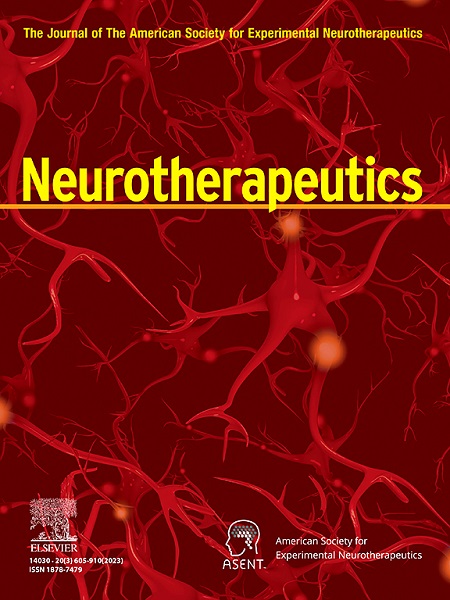First-year treatment response predicts the following 5-year disease course in patients with relapsing-remitting multiple sclerosis
IF 5.6
2区 医学
Q1 CLINICAL NEUROLOGY
引用次数: 0
Abstract
Predicting long-term prognosis and choosing the appropriate therapeutic approach in patients with Multiple Sclerosis (MS) at the time of diagnosis is crucial in view of a personalized medicine. We investigated the impact of early therapeutic response on the 5-year prognosis of patients with relapsing-remitting MS (RRMS). We recruited patients from MSBase Registry covering the period between 1996 and 2022. All patients were diagnosed with RRMS and actively followed-up for at least 5 years to explore the following outcomes: clinical relapses, confirmed disability worsening (CDW) and improvement (CDI), EDSS 3.0, EDSS 6.0, conversion to secondary progressive MS (SPMS), new MRI lesions, Progression Independent of Relapse Activity (PIRA). Predictors included demographic, clinical and radiological data, and sub-optimal response (SR) within the first year of treatment. Female sex (HR 1.27; 95 % CI 1.16–1.40) and EDSS at baseline (HR 1.19; 95 % CI 1.15–1.24) were independent risk factors for the occurrence of relapses during the first 5 years after diagnosis, while high-efficacy treatment (HR 0.78; 95 % CI 0.67–0.91) and age at diagnosis (HR 0.83; 95 % CI 0.79–0.86) significantly reduced the risk. SR predicted clinical relapses (HR = 3.84; 95 % CI 3.51–4.19), CDW (HR = 1.74; 95 % CI 1.56–1.93), EDSS 3.0 (HR = 3.01; 95 % CI 2.58–3.51), EDSS 6.0 (HR = 1.77; 95 % CI 1.43–2.20) and new brain (HR = 2.33; 95 % CI 2.04–2.66) and spinal (HR 1.65; 95 % CI 1.29–2.09) MRI lesions. This study highlights the importance of selecting the appropriate DMT for each patient soon after MS diagnosis, also providing clinicians with a practical tool able to calculate personalized risk estimates for different outcomes.
复发-缓解型多发性硬化症患者的第一年治疗反应预测接下来的5年病程。
在诊断多发性硬化症(MS)患者时,预测其长期预后并选择合适的治疗方法对于个性化医疗至关重要。我们研究了早期治疗反应对复发-缓解型多发性硬化(RRMS)患者5年预后的影响。我们从MSBase Registry招募了1996年至2022年期间的患者。所有患者均被诊断为RRMS,并积极随访至少5年,以探讨以下结果:临床复发,确认残疾恶化(CDW)和改善(CDI), EDSS 3.0, EDSS 6.0,转化为继发性进展性MS (SPMS),新的MRI病变,独立于复发活动的进展(PIRA)。预测因素包括人口统计学、临床和放射学数据以及治疗第一年的次优反应(SR)。女性(HR 1.27;95% CI 1.16-1.40)和基线EDSS (HR 1.19;95% CI 1.15-1.24)是诊断后前5年复发发生的独立危险因素,而高效治疗(HR 0.78;95% CI 0.67-0.91)和诊断年龄(HR 0.83;95% CI 0.79-0.86)显著降低了风险。SR预测临床复发(HR = 3.84;95% ci 3.51-4.19), CDW (hr = 1.74;95% ci 1.56-1.93), edss 3.0 (hr = 3.01;95% ci 2.58-3.51), edss 6.0 (hr = 1.77;95% CI 1.43-2.20)和新脑(HR = 2.33;95% CI 2.04-2.66)和脊柱(HR 1.65;95% CI 1.29-2.09) MRI病变。这项研究强调了在多发性硬化症诊断后为每位患者选择合适的DMT的重要性,也为临床医生提供了一个实用的工具,能够计算不同结果的个性化风险估计。
本文章由计算机程序翻译,如有差异,请以英文原文为准。
求助全文
约1分钟内获得全文
求助全文
来源期刊

Neurotherapeutics
医学-神经科学
CiteScore
11.00
自引率
3.50%
发文量
154
审稿时长
6-12 weeks
期刊介绍:
Neurotherapeutics® is the journal of the American Society for Experimental Neurotherapeutics (ASENT). Each issue provides critical reviews of an important topic relating to the treatment of neurological disorders written by international authorities.
The Journal also publishes original research articles in translational neuroscience including descriptions of cutting edge therapies that cross disciplinary lines and represent important contributions to neurotherapeutics for medical practitioners and other researchers in the field.
Neurotherapeutics ® delivers a multidisciplinary perspective on the frontiers of translational neuroscience, provides perspectives on current research and practice, and covers social and ethical as well as scientific issues.
 求助内容:
求助内容: 应助结果提醒方式:
应助结果提醒方式:


